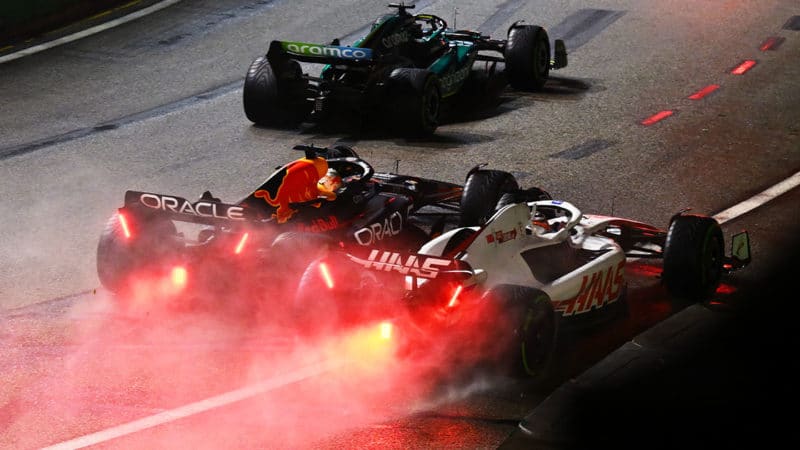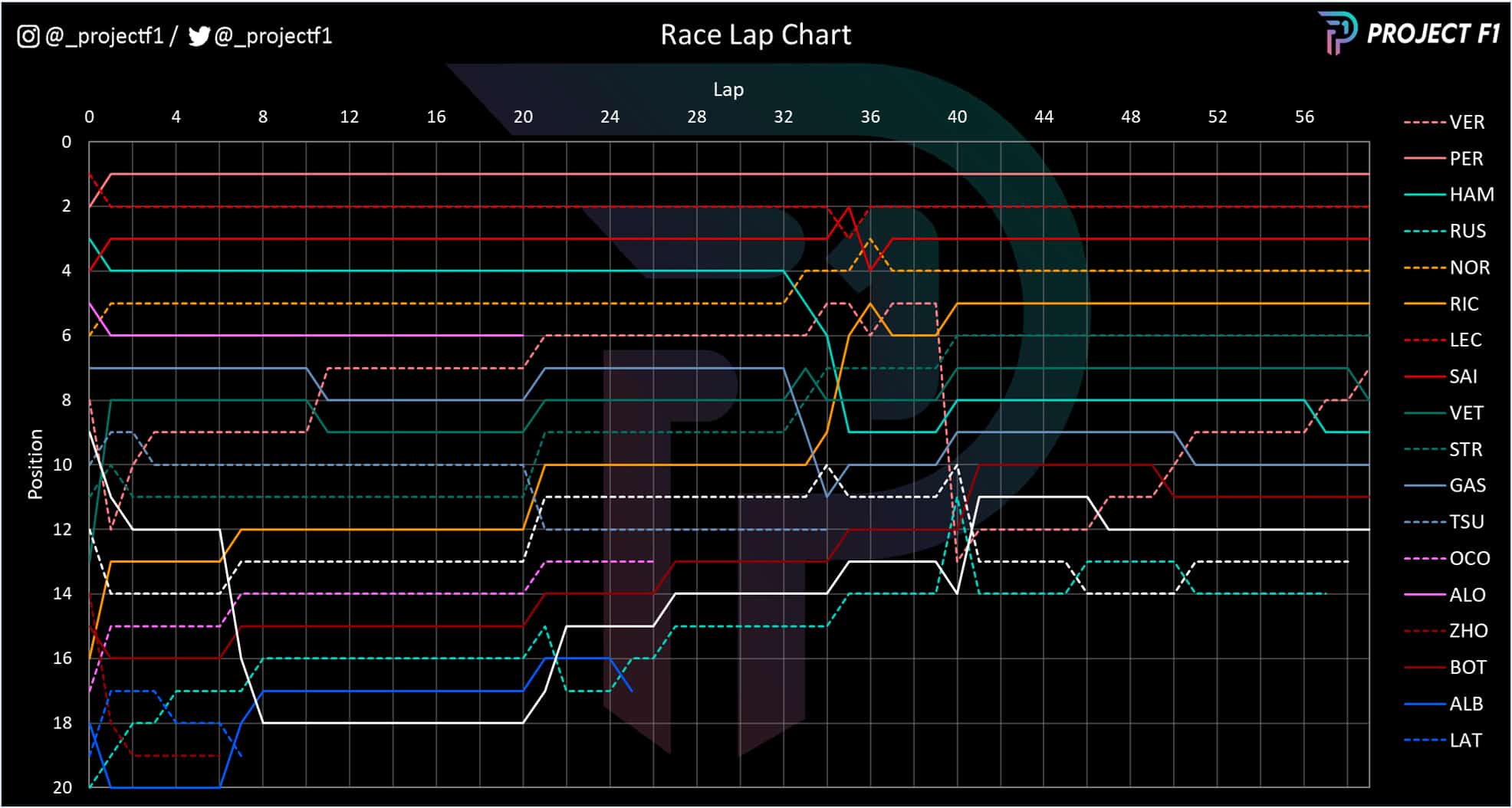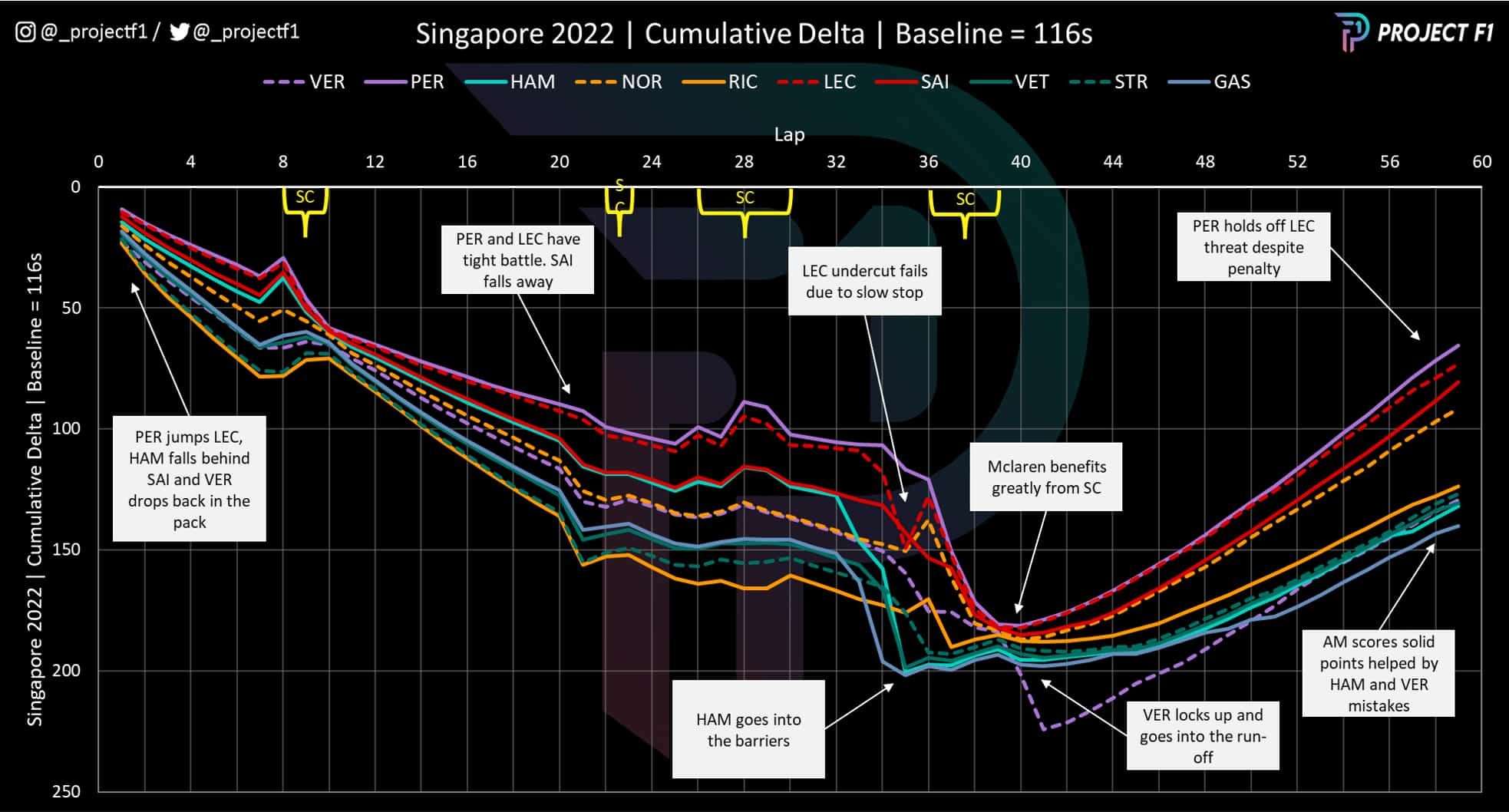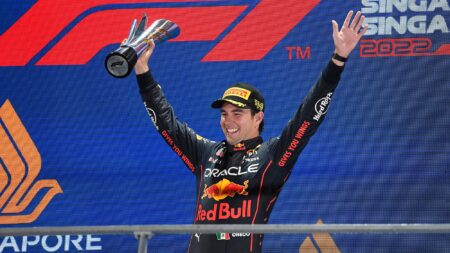The first part of the race (the wet portion) was largely a tale of Sergio Perez and Charles Leclerc duelling on their own at the front, while Lewis Hamilton and Carlos Sainz settled their scores in between the front pack and the midfield. Verstappen was trying to cut through the field after a poor qualifying result and McLaren was trying to hold on to what it could.
But the race hit crucial flashpoints as it approached the lap 30 mark, with Hamilton making a rare mistake and careering into the barriers. This dropped him from being in contention for the podium to fighting at the tail-end of the points.
It could have been much worse if Hamilton hadn’t been able to combine his pitstop for a new nose with a change from intermediate tyres to slicks. Several other drivers opted to stop at the same time; nailing this transition point was critical for the race.
Switching to slicks
Chart 3 Tyre Strategy Summary
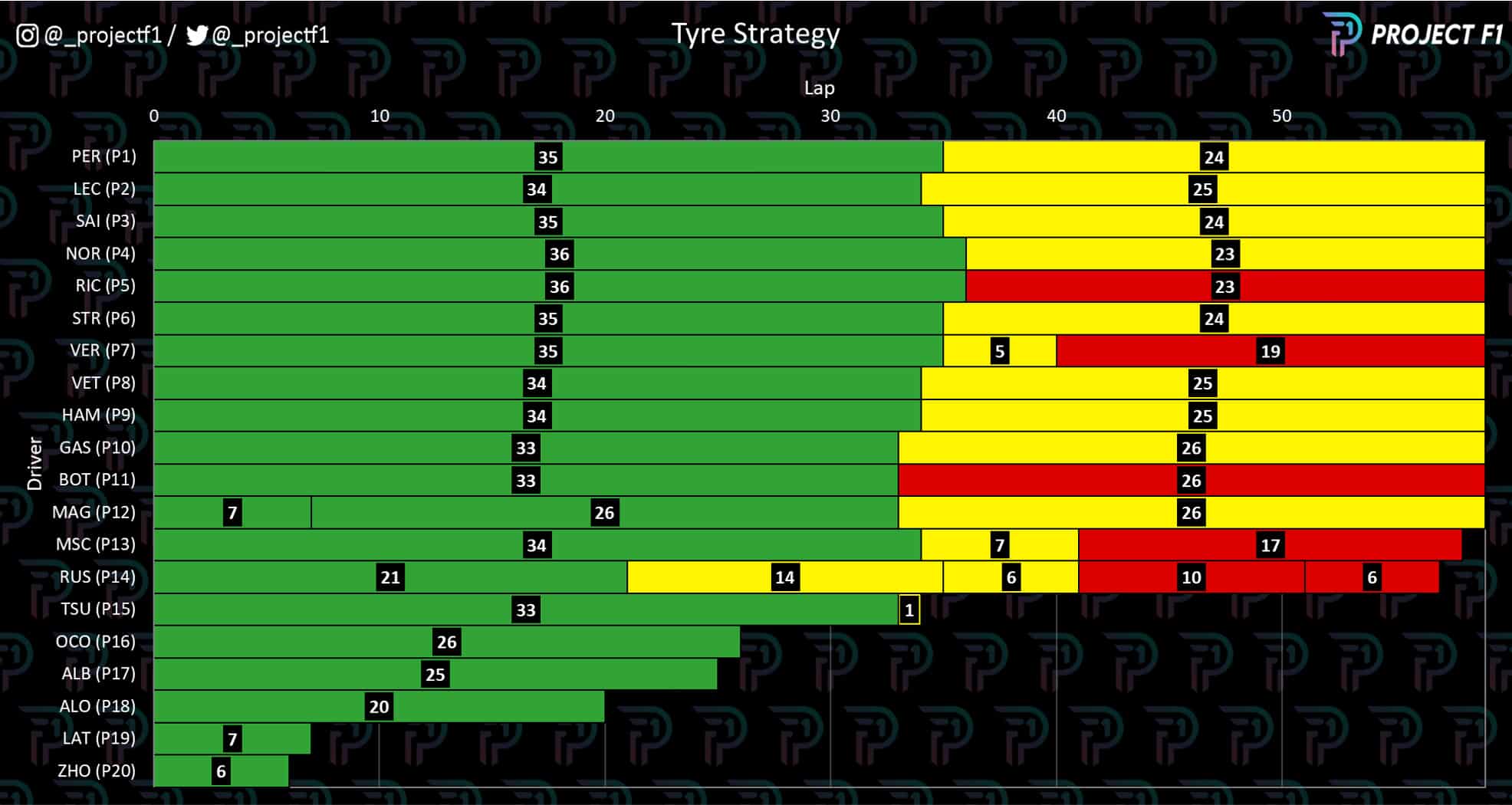
Chart 3 summarises each driver’s tyre usage. Standing out a mile is George Russell, the only driver who changed to slicks before lap 30. Ending the race with nothing to show for the bold strategy, his is a salutary lesson in why it often pays to take a ‘wait and see’ approach.
The majority of drivers pitted around laps 34 and 35, as the calculations pointed to this being the crossover point.
Tyre performance
Chart 4 Tyre performance compared
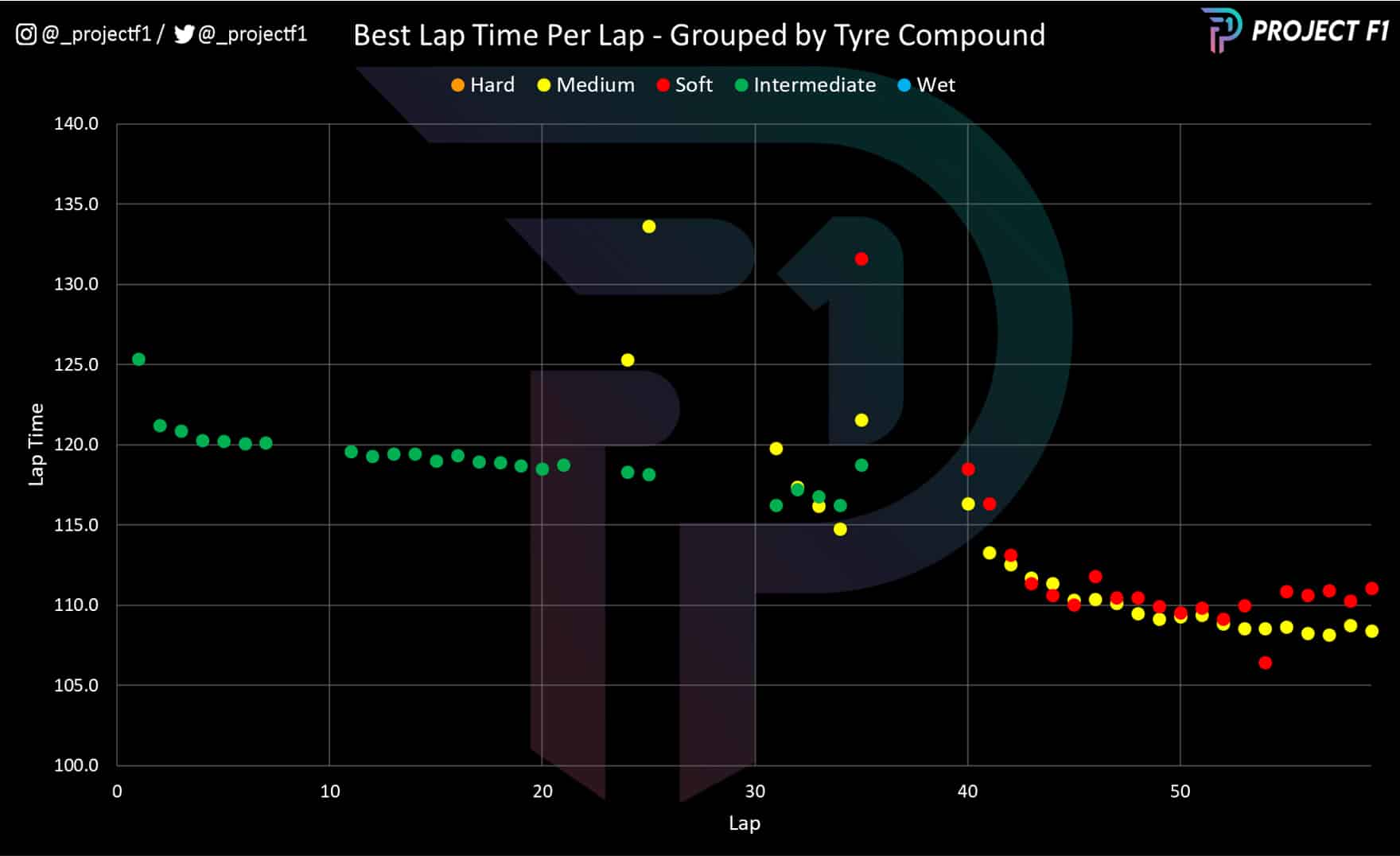
Chart 4 compares the lap times across all the different compounds for which there was data, and once again Russell’s hopelessly early switch to slicks is an obvious anomaly: the medium tyres much slower than the intermediates, indicating that Mercedes had stopped him too early.
The data in this period is sporadic, largely due to the high incidences of safety cars and yellow flags, which emphasises the other crucial skill in the race — to remain on track.
Look past the gaps and we can see that from lap 30 onwards, Russell begins to build momentum, with the medium tyre lapping faster from lap 33 onwards. This is what triggers others to make the call and begin pitting.
But McLaren held fire…
Passing in the pits
Chart 5 Pit Stop Gain and Loss
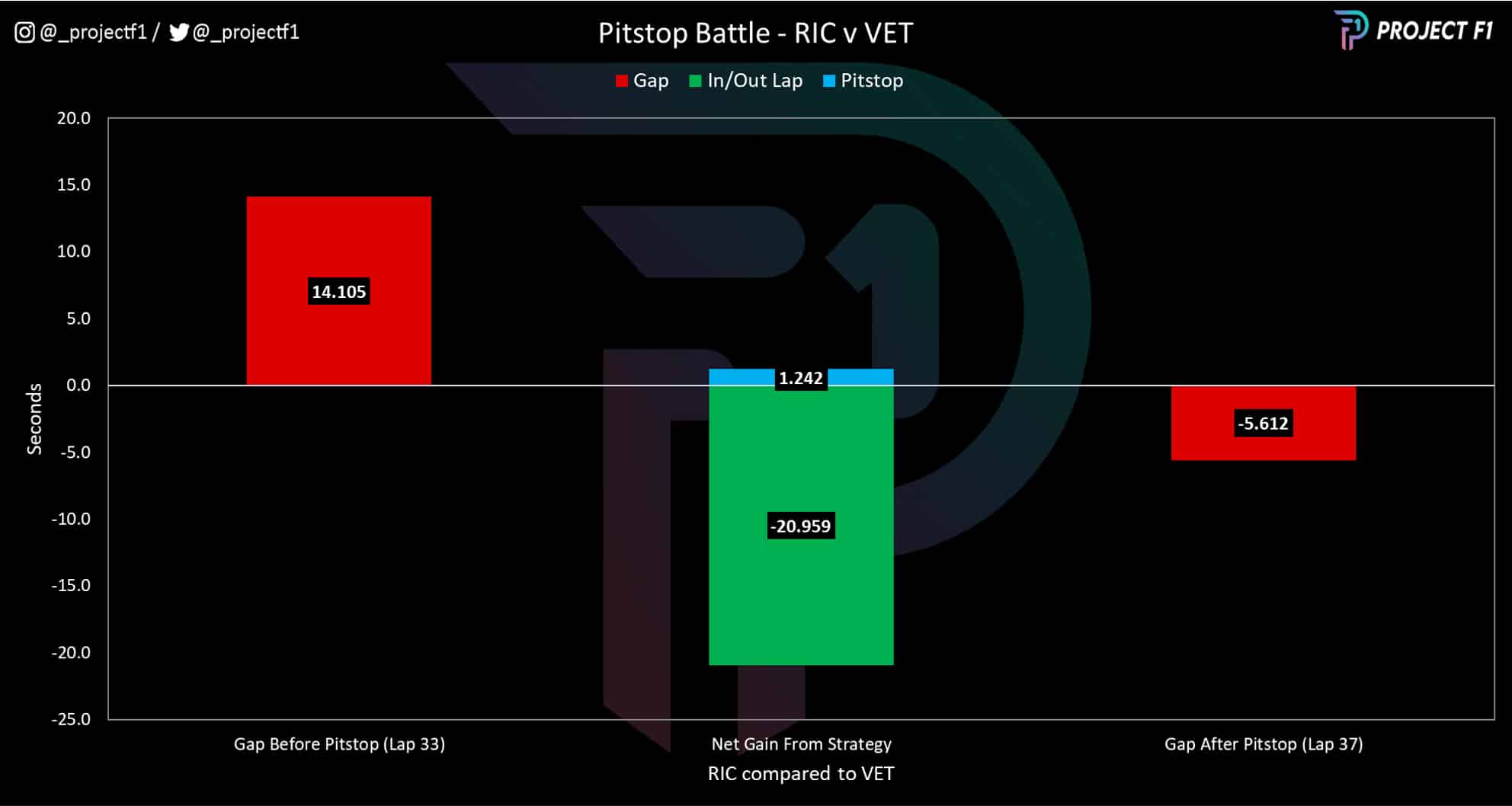
Look at the potential lap times in isolation and it’s clear that stopping as soon as slick tyres are shown to be faster should carry an advantage. Fresh slicks against worn intermediates on an almost-dry track would usually produce a powerful undercut effect.
However, this wasn’t cut-and-dried in Singapore. This was partly because tyre warm-up issues muddied the calculations, but largely because Yuki Tsunoda crashed during the pit window. For anyone who hadn’t already pitted (both McLarens), it was a gift, offering an opportune pitstop with significantly less time-loss than their rivals.
This is illustrated with the example of Ricciardo, who was trailing Vettel by a significant margin prior to the first pitstop but came out materially ahead – despite having poorer pace. Not only this, but McLaren was able to diversify its strategy by splitting the tyre choice for both of drivers, sending Lando Norris out on mediums and Ricciardo out on softs.
McLaren’s split strategy
Chart 6 Trend race pace compared
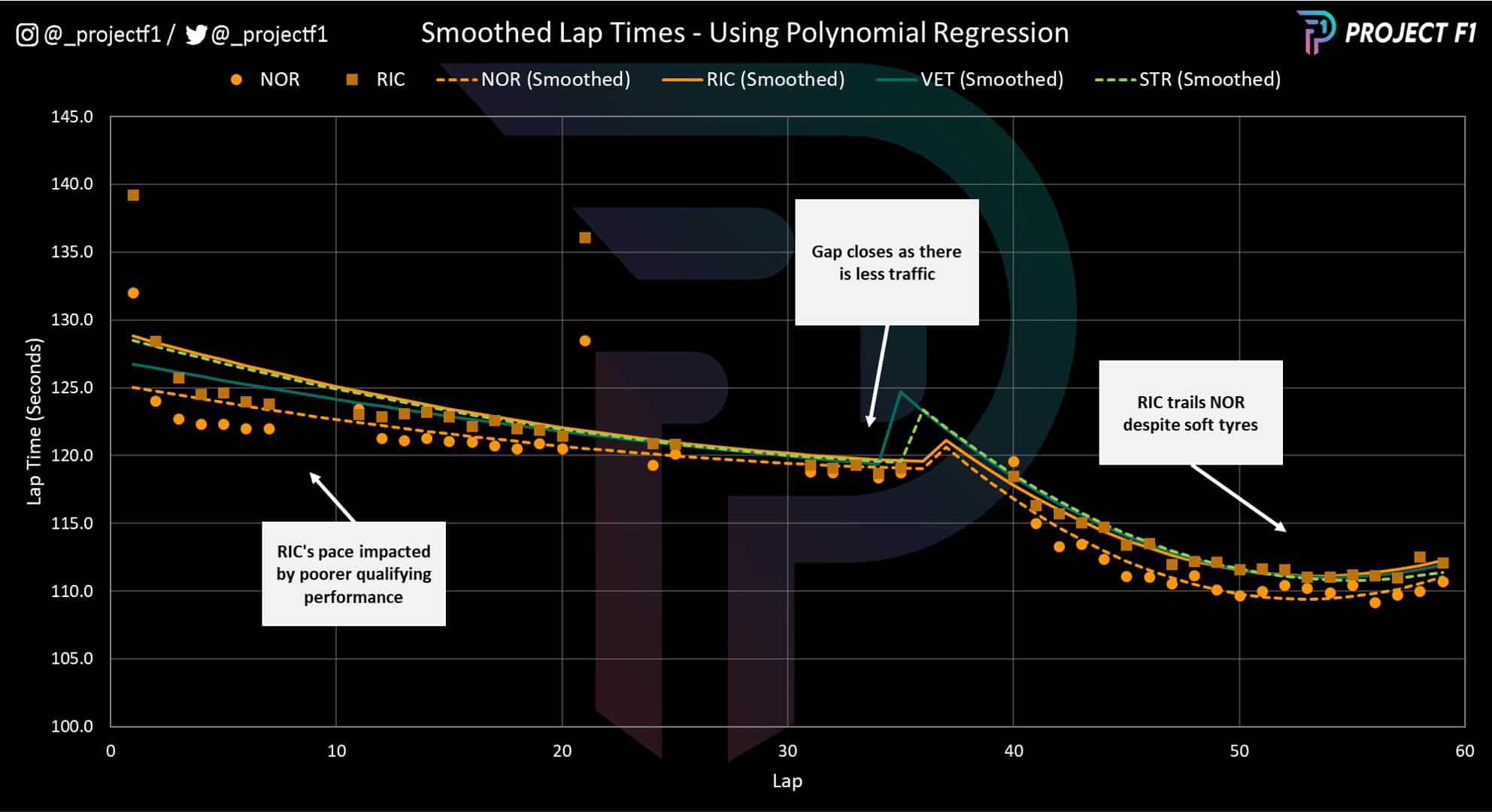
Smoothing out drivers’ race pace filters out the anomalies to show how fast they were at each stage of the Grand Prix. This chart also illustrates how McLaren’s diversified strategy helped to keep Ricciardo in the top five after his stop.
His performance was comparable to that of the Aston Martins throughout the race. But this may not have been possible if he hadn’t been fitted with the soft tyres.
The benefit of the safety car was key in gaining relative lap time, but the gain in tyre performance was also crucial for Ricciardo in holding onto P5 as shown by the narrow margin between him and sixth-placed Lance Stroll, evident in Chart 2.
And while fortune was its their side, McLaren did a good job in extracting the pace from its package, as well as keeping it clean throughout the race – as many others failed to do. Norris in particular had a solid performance, doing enough to even trouble the likes of Sainz who claimed the final spot on the podium.
To make matters sweeter, Alpine had suffered a double retirement for their drivers – thus maximising the points swing in McLaren’s favour.
Individual race pace
Chart 7 Overall Race Pace Compared
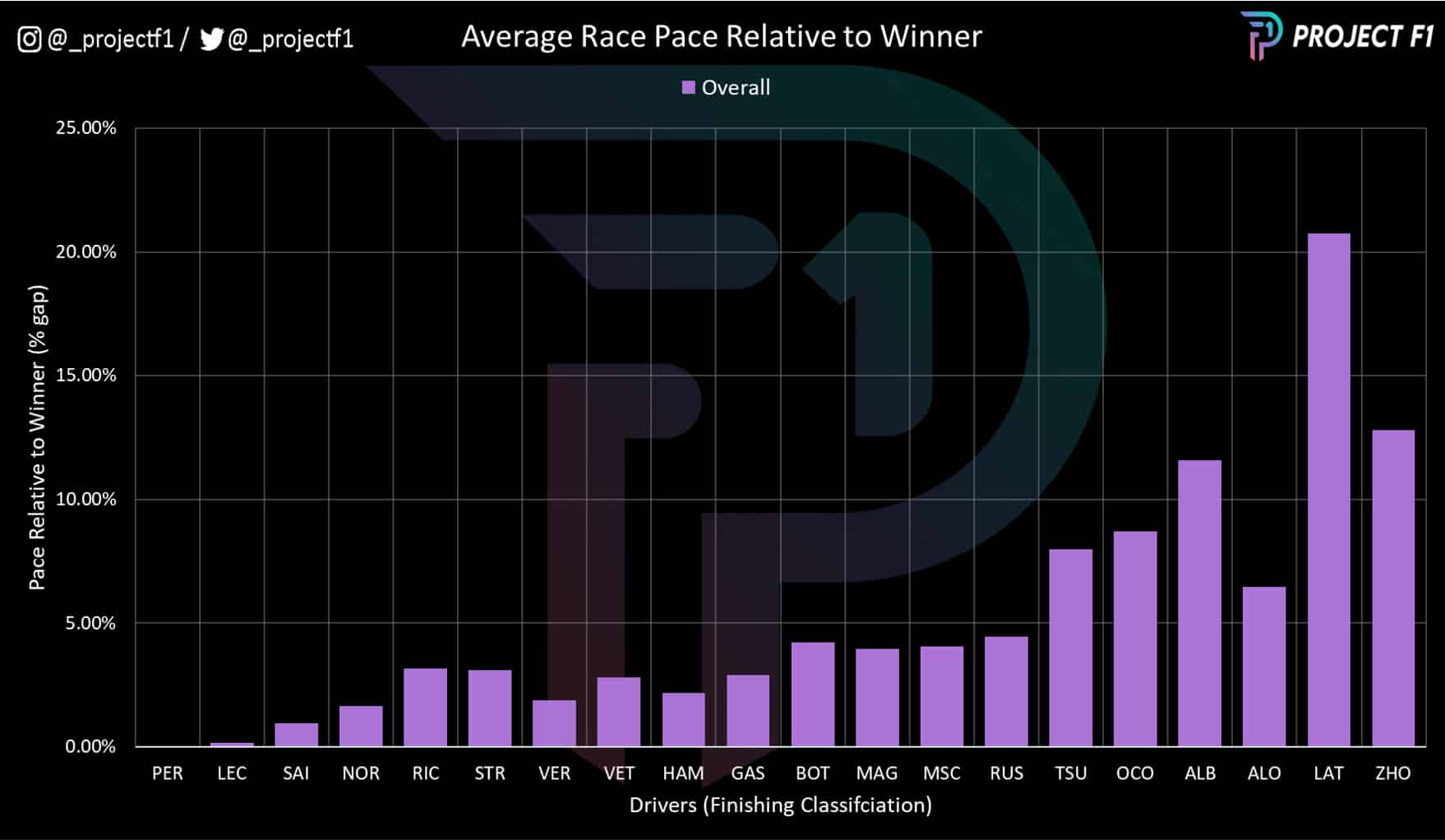
Aston Martin was another team that did well. Both drivers had solid pace, as shown in Chart 7 – with Stroll fending off the likes of Verstappen and Vettel staying ahead of Hamilton despite having poorer pace. This largely boiled down to the uncharacteristic mistakes of both recent champions.
Be that as it may, the Aston drivers kept their cars on the road and lapped quickly enough to hold their places.
Stroll got the better of Vettel, as his slick tyres warmed up faster after changing from intermediates. Their pace was relatively comparable – with the slight edge going to Vettel as shown in the previous Chart 6.
In both Aston Martin and McLaren’s case patience from the team and drivers, the right strategy and a dollop of luck saw them leave Singapore on a high. Who will the Rain Gods favour in Suzuka?
Project F1 turns data into graphics that uncover race pace and strategy
See more analysis at @_ProjectF1 on Twitter or @_ProjectF1 on Instagram
